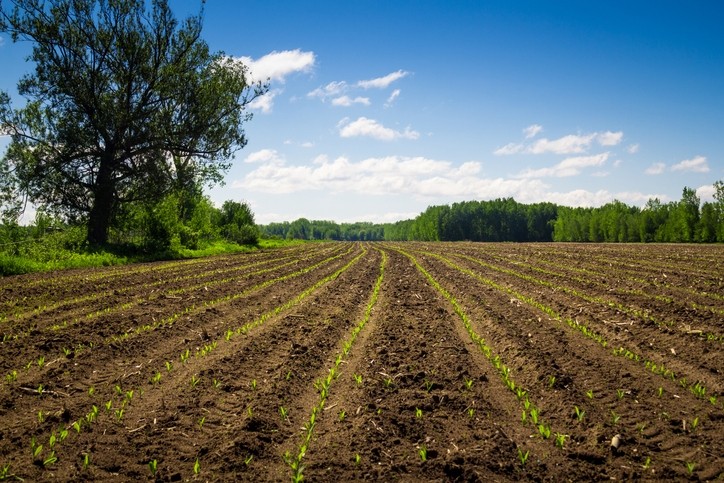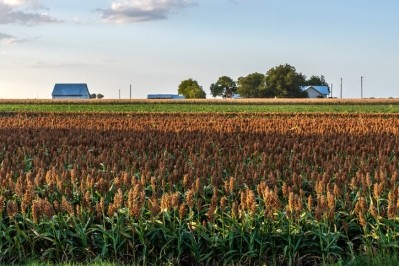Delayed US planting may lower corn yields, acres and raise feed prices

The US Department of Agriculture (USDA) released details about the pace of planting and crop emergence in a new report Monday.
“This year some of the major Corn Belt states are well behind planting in corn – more than 50% off their average,” said Todd Hubbs, assistant professor of agricultural commodity markets with the University of Illinois.
May 20 tends to be used as a cut-off date for planting as corn yield in some parts of the Corn Belt can start to fall dramatically when the crop is planted after that point, he added.
Summer weather defines yield in corn production, however, planting later in the season or changing to shorter growing varieties tends to negatively influence yield, he said.
“We were looking at a wet April and we’ve moved into a very wet May, and the crop progress is well behind pace,” he told us. “The five-year average as of May 12 is 66% – we were at 30%. We’re well behind pace particularly in the eastern Corn Belt.”
On average it can take about 14 days to plant the corn crop raised in the US Corn Belt, he said. Although the time it takes to plant an acre has decreased as technology has improved farm size and the number of acres that must be planted remain a factor of the time needed.
The delay in planting may have some producers considering the decision not to plant corn and make use of prevented planting supports, Hubbs said. However, others may consider switching some crop acres into soybeans – especially with the possibility of another producer support program being provided.
Prevented planting relates to the failure to plant an insured crop before a set point for a specific reason that is also affecting other producers in the region, said the USDA. The coverage provides some financial support.
“There’s a lot going on right now, with trade policy and payment policy is filtering into this,” said Hubbs.
With the current price for soybeans, planting more acres is less attractive, but the possibility of financial support like that provided in the market facilitation process could change the math, he added.
“There’s a big calculus going on right now,” he said.
However, the potential for reduction in corn production could be bullish for corn prices, and a weather rally may be forming for the feed crop, he said. “We could see corn prices go up significantly from where they are now,” he added.
Corn and soybeans progress
The weather and wet soil have delayed planting for both corn and soybean crops, said the USDA. It also has been slowing sprouting for the feed grain.
Last year by May 12, about 59% of the corn crop had been planted in the 18 states responsible for the majority of the corn crop, and on average about 66% of the crop is in the ground, the department said. This year 30% of the crop has been planted.
Several states – including Indiana, Michigan, Ohio and South Dakota – have yet to plant 10% of their crop, the department said. Of the 18, five have planted at least half of their crop.
Corn emergence also is trailing past years, as about 10% of the crop has sprouted, the department said. On average, about 29% would have emerged by this point and last year 25% had.
Soybeans show a similar picture as about 9% of the crop has been planted in the 18 states responsible for the majority of the crop production, the department said. On average about 29% would have been planted by this point in the spring, and last year 32% was in the ground.
Louisiana and Mississippi have seen the most progress in terms of planting, with 53% and 33% of the crop planted, the department said. South Dakota has yet to report any planting – on average about 19% of its crop is in the ground at this point.
Sorghum
Similarly, sorghum planting is trailing behind the pace set in previous years, the USDA reported.
On average about 33% of the crop has been planted by this point in the year, and last year 32% of the crop was, the department said. However, this year less than a quarter of the crop is in the ground.
Texas has seen the most progress and about 75% of the crop has been planted, the department said. Typically, the state has planted slightly more than that that by this stage and last year 85% of the crop had been established.
Planting has yet to start in both Colorado and Oklahoma, the department added.
Wheat development
Winter wheat development is slightly behind where it has been previously, and with 42% of the crop headed, is progressing more slowly than on average, the USDA said. On average about 54% of the crop has reached that level of maturity by this point in the growing season.
However, wheat crop condition has improved from last year, the department said. Last year at this point about 36% of the crop and earned a good or excellent rating and this year about 64% of the crop has.
Spring wheat planting also has been slowed and about 45% of the crop has been planted – a drop from the 54% planted last year at this point and the 67% planted on average, the department said.
Of the 6 states responsible for the majority of the crop, three – Minnesota, North Dakota and South Dakota have yet to plant half their crop, the department said. In a typical year, all six states would have reached at least that milestone by this point.
However, wheat sprouting is more in line with past development, the department said. Last year by this point about 13% of the crop had emerged and this year about 10% has – although, on average, about 34% of the crop is sprouting by this point.












